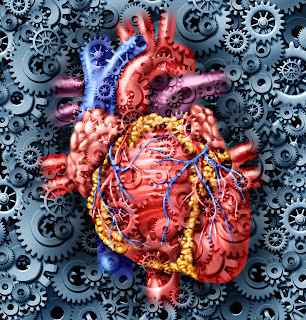BEYOND BALANCE: Vestibular Contributions to Cardiovascular and Circulatory Functions
 The human vestibular system goes far beyond just helping us stand upright and move without falling. It plays a role in many functions that are essential to human life.
The human vestibular system goes far beyond just helping us stand upright and move without falling. It plays a role in many functions that are essential to human life. Here are several scientific studies about how the vestibular system interacts with cardiovascular and circulatory function.
- This review considers the integration of vestibular and other signals by the central nervous system pathways that participate in balance control and blood pressure regulation, with an emphasis on how this integration may modify posture-related responses in accordance with behavioral context. McCall, Andrew & Miller, Derek & Yates, Bill. (2017). Descending Influences on Vestibulospinal and Vestibulosympathetic Reflexes. Frontiers in Neurology. 8. 112.
- Stress is a major public health problem, which affects most of the systems of the body. It was hypothesized that vestibular stimulation inhibits both the stress axis in direct and indirect ways and relieves stress. Assessment of stress was performed before and after intervention using stress questionnaire and measuring cortisol levels, blood pressure and pulse rate. The present study provides evidence for beneficial effects of vestibular stimulation as an intervention for stress. Hence vestibular stimulation may be considered as a possible adjunctive therapy for those experiencing stress. Rajagopalan, Archana & Sailesh, Kumar & Jk, Mukkadan. Effect of vestibular stimulation on stress and cardiovascular parameters in healthy college students (2016) Biomedical Research. 27. 985-990.
- Humans demonstrate a number of unique adaptations that allow for the maintenance of blood pressure and brain blood flow when upright. While several physiological systems, including cerebral autoregulation, are involved in this adaptation the unique role the vestibular system plays in helping to maintain brain blood flow is just beginning to be elucidated.Serrador, JM, Schlegel TT, Black FO, Wood SJ. Vestibular effects on cerebral blood flow BMC Neuroscience [23 Sept 2009. 10:119]
- Evidence accumulated over 30 years, from experiments on animals and human subjects, has conclusively demonstrated that inputs from the vestibular otolith organs contribute to the control of blood pressure during movement and changes in posture.Yates, B. J., Bolton, P. S., & Macefield, V. G. (2014). Vestibulo-Sympathetic Responses. Comprehensive Physiology, 4(2), 851–887.
____________________________________
To learn more, visit the
Practical Applications page on the GyroStim website
as a staring point to learn more about how
clinicians and researchers are using the GyroStim to provide
vestibular stimulation and sensorimotor exercise
with precision, control and repeatability.
_____________________________________
Practical Applications page on the GyroStim website
as a staring point to learn more about how
clinicians and researchers are using the GyroStim to provide
vestibular stimulation and sensorimotor exercise
with precision, control and repeatability.
_____________________________________



